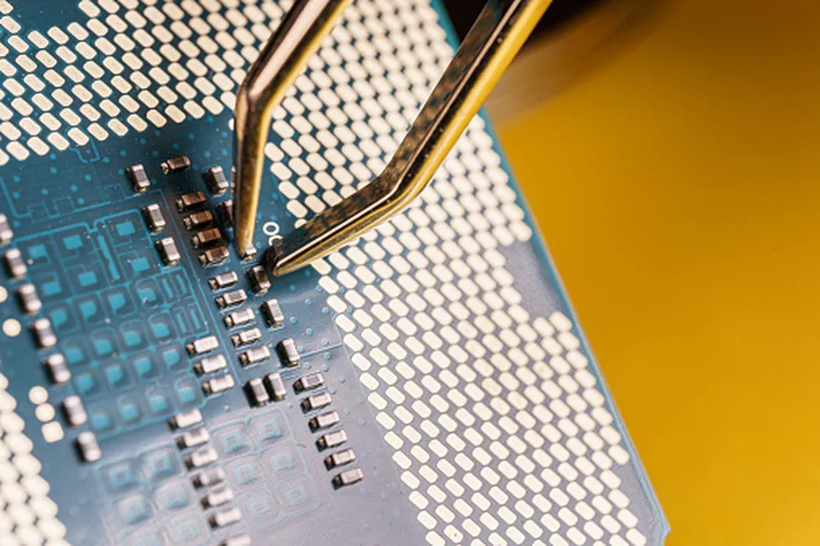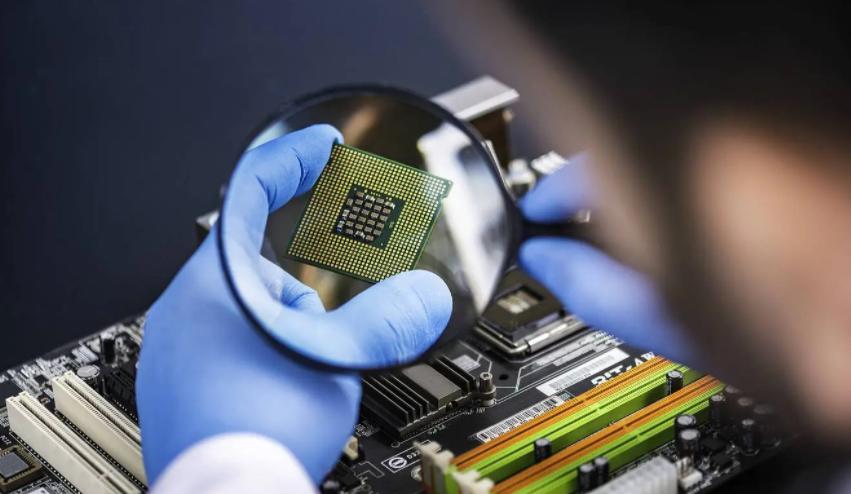Semiconductor Chip: What is Memory Integrated Circuit (IC)

Introduction
Memory storage integrated circuits (IC) are indispensable core components of modern electronic devices, undertaking the key tasks of data storage and processing. With the rapid development of information technology, the performance requirements for memory devices are increasingly high. This article will provide a detailed exposition of memory storage integrated circuits, including their basic concepts, main categories, functional roles, and explore their development trends.
Memory Storage IC Overview
As one of the core semiconductor components, storage chips are used to store digital data, typically manufactured using semiconductor integrated circuit processes. Memory storage ic consist of a large number of identical storage cells, each capable of representing the "0" and "1" states to store different information. Compared with traditional magnetic memory, semiconductor memory occupies a dominant position in modern computer systems due to its fast access speed, large storage capacity, and small size, which simplifies the input and output interface.
Main Categories and Functions
Ø Random Access Memory (RAM): Allows random access to data at any location, with fast read and write speeds, but information is lost after power-off, making it a major component of the main memory in microcomputers. Depending on the manufacturing process, RAM can be divided into bipolar RAM and Metal-Oxide-Semiconductor (MOS) RAM. RAM is further divided into Static Random Access Memory (SRAM) and Dynamic Random Access Memory (DRAM). SRAM has stable status, high power consumption, and fast access characteristics, but it is more expensive and commonly used for high-speed cache. DRAM has a high integration level, low power consumption, requires periodic refresh to avoid data loss, and is relatively cheaper, making it the main part of modern computer main memory.
Ø Read-Only Memory (ROM): Used to store fixed programs and data, mainly for storing long-term fixed data or information, such as various function tables, characters, and fixed programs. The writing of ROM is usually completed during the production process and cannot be changed by the user. With the development of technology, there have emerged Programmable ROM (PROM), Erasable Programmable ROM (EPROM), and Electrically Erasable Programmable ROM (EEPROM).
Ø Flash Memory (Flash): Flash is a non-volatile memory that can maintain data without power. It combines the read and write capabilities of RAM with the data retention characteristics of ROM and is widely used in devices such as USB drives and Solid-State Drives (SSDs).
Market Main Manufacturers and Models
In the domestic and international markets, popular manufacturers of memory storage integrated circuits include Samsung, SK Hynix, Micron, and GigaDevice. Samsung, SK Hynix, and Micron hold over 90% of the market share in the DRAM market, while in the NAND Flash market, Samsung, Toshiba, Western Digital, and Micron are the dominant enterprises.
Among them, the recent popular related electronic chip parts are: 8 KB flash program memory STM8S003F3P6TR from STMicroelectronics, DDR3 DRAM K4B2G1646F-BYMA from Samsung, And the FRAM ic MB85RS64PNF-G-JNERE1 from Fujitsu.

Choosing Right Memory Storage Chip
When designing and developing modern electronic systems, selecting the right memory storage integrated circuit is crucial to meet the performance, cost, and size requirements of the application. When selecting, the following factors should be considered to choose the most suitable memory storage chip for specific applications, optimizing the overall performance and cost-effectiveness of the system.
● Performance Requirements: Assess the required storage capacity, data access speed, access time, and power consumption. For example, SRAM provides fast access, suitable for high-speed cache; while DRAM offers higher capacity, suitable for main storage.
● Memory Type: Choose between RAM or ROM based on whether the data needs to be retained after power-off. For occasions requiring non-volatile storage, Flash is the preferred choice.
● Cost-effectiveness: The cost of memory varies with type, capacity, and performance. Conduct a cost-effectiveness analysis to ensure that the selected memory provides the required performance within the budget.
● Other Factors: Consider suppliers, technical compatibility, reliability and durability, and future scalability.
Development Trends
The development trend of memory storage integrated circuits is characterized by continuous technological innovation, continuous expansion of application fields, dynamic changes in market competition patterns, and collaborative development of the industrial chain. The development trend is reflected in the following aspects:
1. Technological Innovation: With the continuous advancement of process technology, the integration and performance of memory continue to improve.
2. Application Expansion: The application field of memory has expanded from traditional computers and mobile phones to emerging fields such as smart homes, intelligent transportation, and intelligent manufacturing.
3. Market Competition: The entry of emerging companies and technological innovation promote dynamic changes in market competition patterns.
4. Industrial Chain Collaboration: The cooperation between upstream and downstream enterprises is increasingly close, jointly promoting the development of the entire industry chain.
With the popularization of technologies such as 5G, the Internet of Things, and artificial intelligence, the performance and capacity requirements of semiconductor memory will continue to grow, and the pace of technological innovation will also accelerate. At the same time, the application field of semiconductor memory will further expand from traditional computers and mobile phones to smart homes, intelligent transportation, intelligent manufacturing, and other fields.
Conclusion
Memory storage IC are the cornerstone of the advancement of modern information technology. With the continuous progress of technology and the growth of market demand, these integrated circuits are continuously expanding in performance, capacity, and application range. Selecting the right storage chip is crucial to ensure that electronic devices meet the growing performance demands. In the future, with the integration and application of technologies such as 5G, the Internet of Things, and artificial intelligence, memory storage integrated circuits will continue to drive innovation and development in the digital world, having a more profound impact on society.
Website: www.conevoelec.com
Email: info@conevoelec.com








